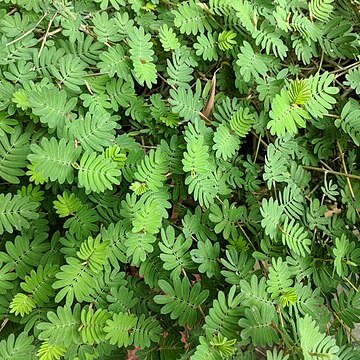Herbs, annual, 15-100 cm tall, ascending to decumbent. Stems slender, many branched, glabrous; nodes congested apically on stems. Stipules membranous, dry, glabrous. Leaves 6-20-foliolate, sensitive; rachis 1-3 cm, with small spinelike trichomes; petiolules ca. 1 mm, glabrous; leaflet blades oblong, 4-10 × 1.5-3 mm, thinly papery, secondary veins 5 on each side of midvein, apex obtuse to rounded and with a spinelike mucro. Inflorescences axillary racemes, with 1-6 or more flowers clustered near apex; peduncle short; bracts stipule-shaped, caducous. Flowers 8-10 mm. Pedicel 2-3 mm; bracteoles 2, ovate, ca. 1/3 as long as calyx, adnate to calyx, persistent, margin ciliate. Calyx 5-8 mm, thickly papery, sparsely setose, with parallel veins. Corolla yellow, slightly longer than calyx; standard obovate, ca. 5 mm wide, claw short, apex slightly emarginate; wings oblong, shorter than standard; keels ± as long as wings. Stamens diadelphous. Ovary linear, with numerous ovules. Legume a plicate loment, shortly stipitate, divided into 4-6 articles; articles densely papillate. Seeds not seen. Fl. Jul-Sep, fr. Sep-Nov. 2n = 38.
More
An annual herb. It often lies along the ground and curves up at the tips. It is much branched. Stems are 0.2-1.5 m long. The small leafy structures (stipules) at the base of the leaves remains on the plant and has a chaffy texture. The leaves have 3-12 pairs of leaflets. They are only slightly sensitive, curling up, when touched. The leaflets are 0.4-1.5 cm long by 2-3 mm wide. The flowers are yellow. They occur as 2-6 together in the axils of the upper leaves.


